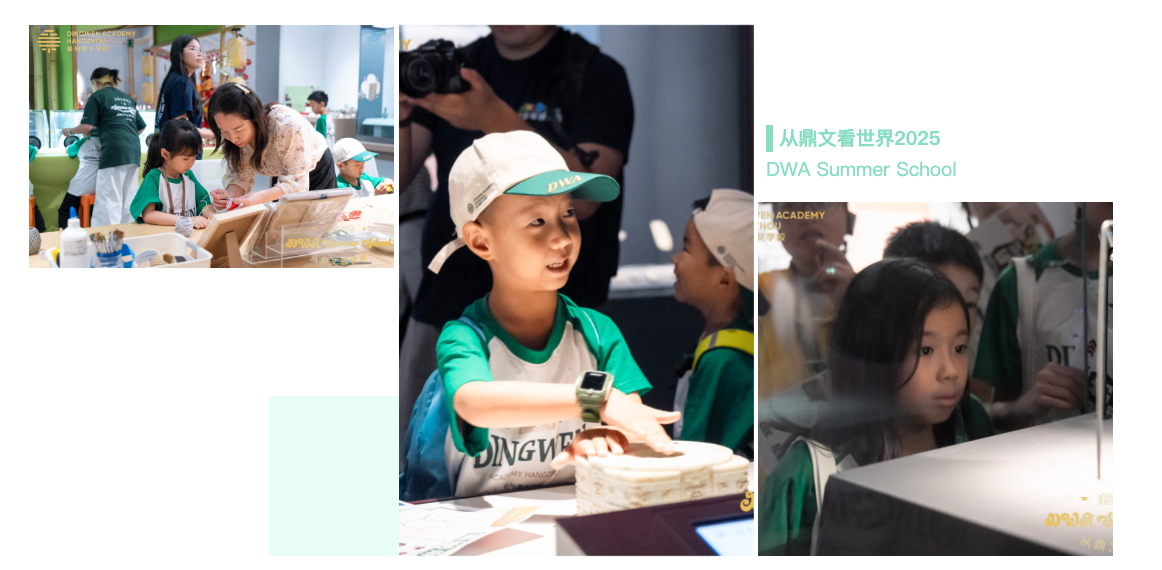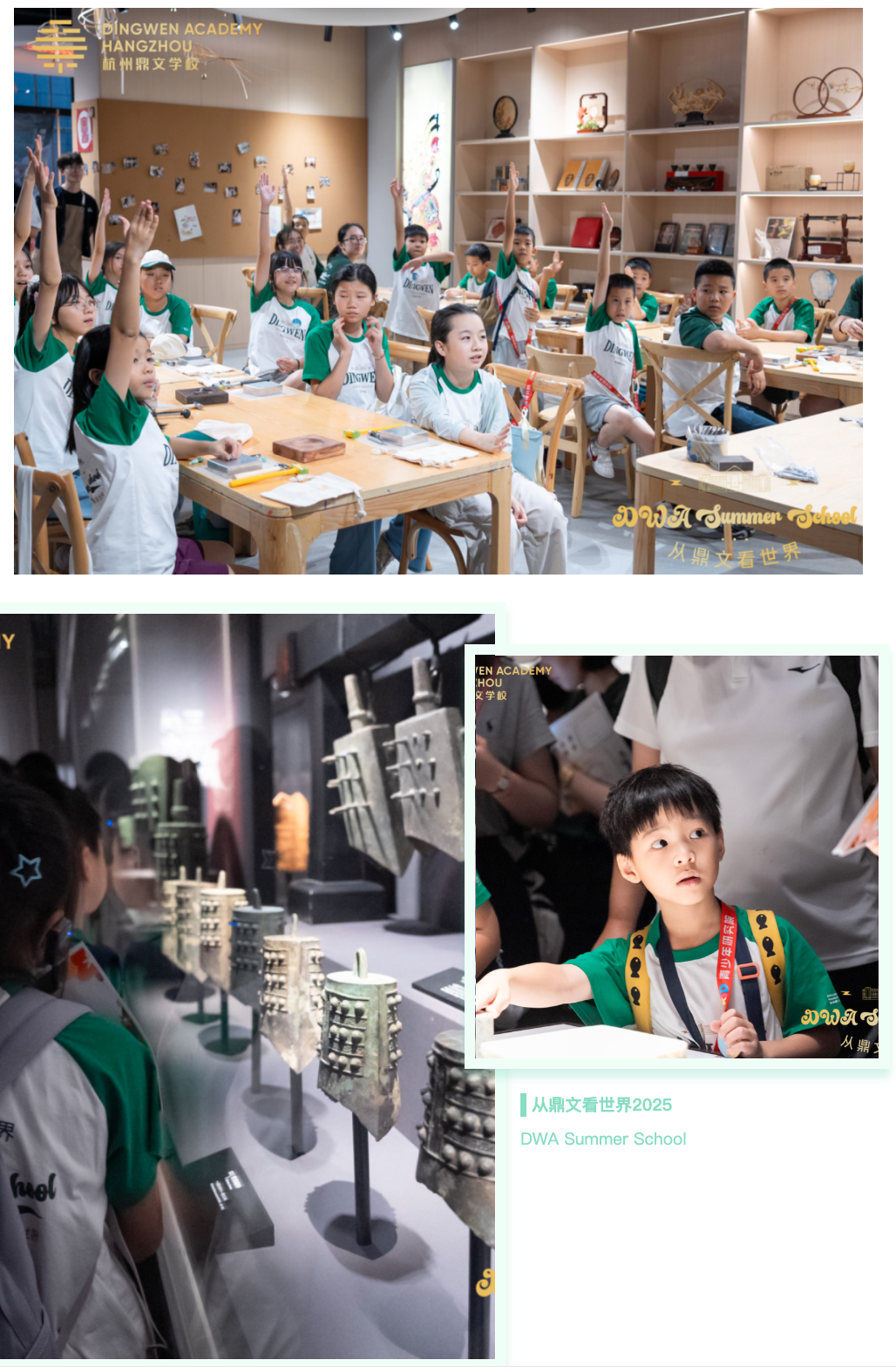博物館研學(xué)日成為一場(chǎng)穿越時(shí)空的集體對(duì)話。
觸摸復(fù)制品、操作數(shù)字導(dǎo)覽,歷史不再是書本上的陳述,而是可看、可感、可思的真實(shí)存在,知識(shí)在沉浸式的體驗(yàn)中沉淀、生長。
Museum Exploration Day became a collective conversation across time and space. By touching replicas and using the digital guides, history was more than a statement in books; it becomes a real presence that can be seen, felt, and thought about. Knowledge took root and flourished through immersive experiences.
各年齡段的營員帶著不同的視角與好奇心涌入靜謐的展廳。幼小營的孩子踮著腳觀察彩陶的紋路;小學(xué)營的孩子們努力辨識(shí)青銅器上的銘文,低聲討論著古代的生活方式有現(xiàn)代工具,是怎么想出這么精巧結(jié)構(gòu)的?”這樣的疑問在展廳的不同角落回響。
Campers of all ages flooded into the quiet galleries, bringing a variety of perspectives and curiosities. Children from the kindergarten camp tiptoed to observe patterns on the painted pottery. Children from the primary camp struggled to decipher inscriptions on bronze vessels and whispered about ancient lifestyles.


中學(xué)營的學(xué)生則駐足于古代科技發(fā)明前,拆解其原理,與他們在無人機(jī)、產(chǎn)品設(shè)計(jì)課上的理念進(jìn)行跨時(shí)空的印證。“古人沒有現(xiàn)代工具,是怎么想出這么精巧結(jié)構(gòu)的?”這樣的疑問在展廳的不同角落回響。
Students from the middle school camp paused in front of ancient technological inventions, breaking down their principles and connecting them with the concepts they had learned in drone technology and product design courses. "How did the ancients come up with such elaborate structures without modern tools?" Such questions echoed in different corners of the exhibition hall.

